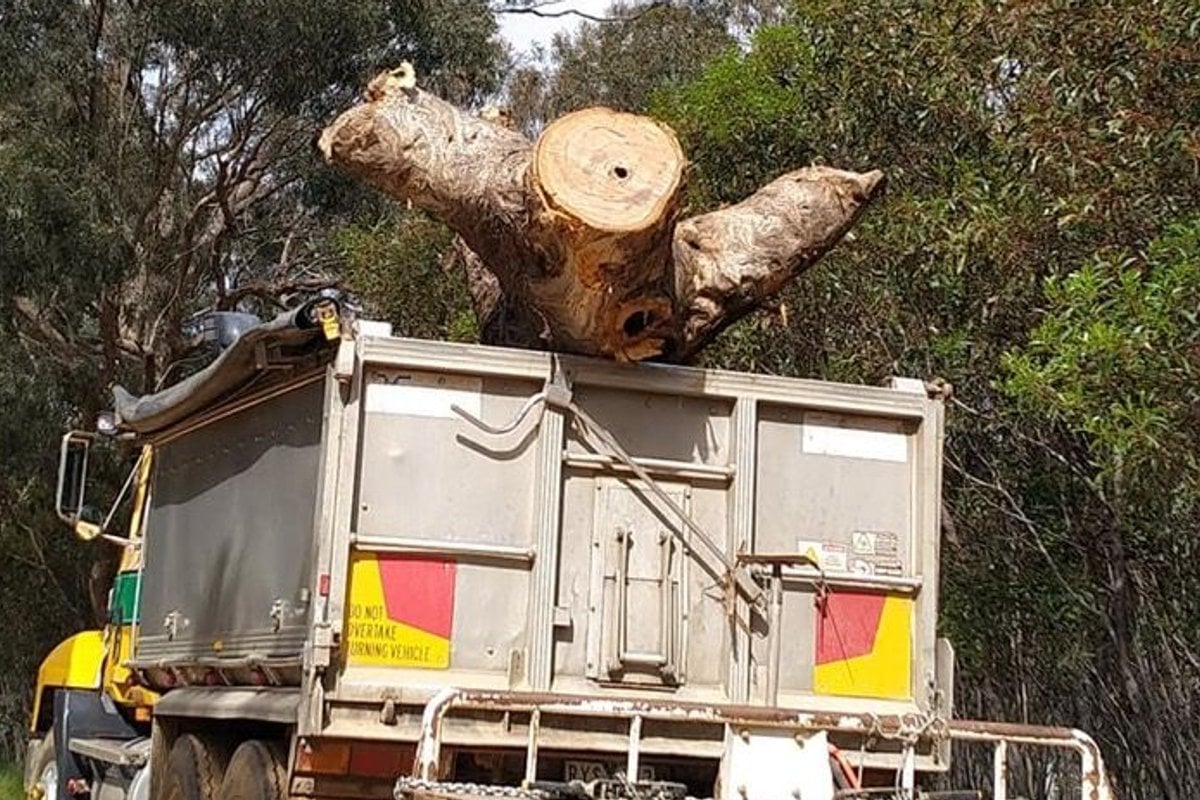
On Monday, chainsawed pieces of a once-towering Yellow Box eucalypt tree were loaded into the back of a truck in western Victoria.
To the state government, that tree represented an obstacle to its new Western Highway, which is currently under construction between Ballarat and Stawell.
To the Djab Wurrung traditional owners, it represented a connection to their land, to their ancestors and ancient songlines.
Watch: "I'm tired of begging and asking for our humanity": Indigenous Lives Matter.
This sacred 'Directions Tree' was felled on Monday, despite the best efforts of protestors who have spent years trying to save a corridor of more than 200 culturally significant trees from the $672 million highway duplication project.
News of Monday's events drew an outpouring of grief from a number of Indigenous people, activists and allies.
"I can feel the chainsaws tearing through my heart, my spirit, my DjapWurrung body is in pain," tweeted Sissy Austin, a Djab Wurrung woman and member of First Peoples' Assembly of Victoria.

Top Comments